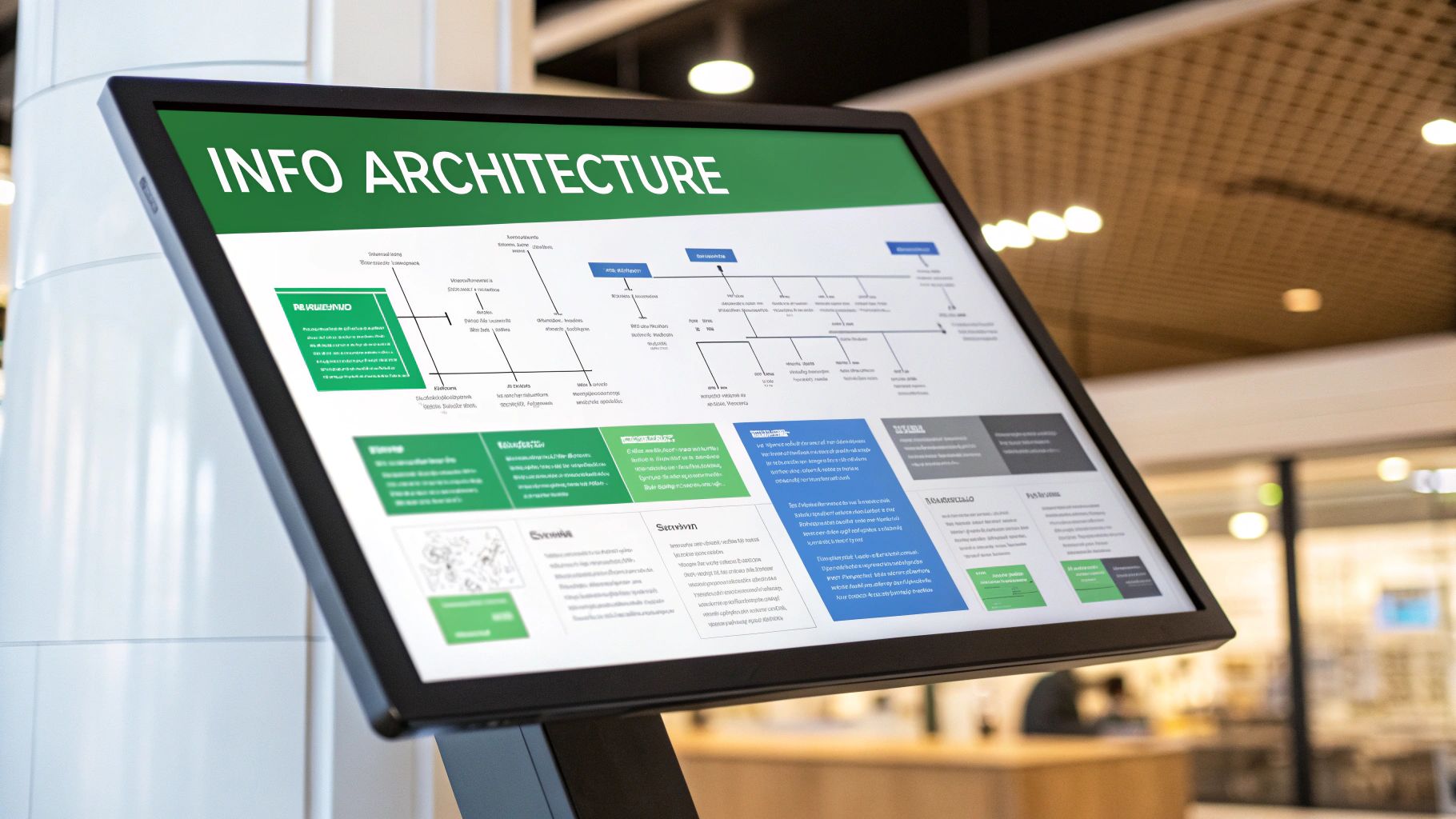Unlocking the Power of Technical Writing
Clear communication about complex information is essential in fields like software development and engineering. Technical writing connects the dots between complex ideas and the people who need to understand them. While earlier technical documents were often dense and filled with jargon, modern documentation puts the focus squarely on user needs and practical understanding. The key question is: what makes technical documentation truly useful? The answer lies in specific techniques grounded in how people learn and process information. Good technical writing does more than list steps - it understands what users need and presents information in ways they can readily absorb and apply.
The technical writing field has evolved considerably. In the past, the main priority was including every technical detail, even if that made documents harder to understand. But as technology became central to daily life, documentation needed to become more approachable. Research in usability and human-computer interaction has driven a shift toward analyzing audience needs, using clear language, and communicating visually. This article explores eight core skills that define effective modern technical writing. Whether you write for developers, engineers, business users or consumers, you’ll learn practical ways to create documentation that helps people understand and act on complex information. The goal is to equip you with tools to make your technical communication clear, useful and impactful.
1. Clarity and Precision

Clear and precise writing forms the backbone of effective technical communication. The ability to convey complex technical information in a straightforward, unambiguous way helps readers quickly grasp key concepts. For software developers, engineers, tech companies, and freelancers, mastering this skill is crucial for professional success.
Good technical writing relies on several key elements: exact terminology, clear sentence structure, and consistent style. Compare these two examples: “The system had a problem” versus “The database server experienced a buffer overflow error at 14:35 UTC.” The second example, while more technical, gives readers specific, actionable information.
As software systems grow more complex, the need for clear documentation becomes even more important. Early technical writing often fell into the trap of using too much jargon and assumed readers had extensive background knowledge. Modern documentation practices focus on making content accessible to both technical and non-technical audiences.
Writing with clarity and precision offers many advantages. It helps prevent misunderstandings, makes documents more usable, reduces support requests, and helps users learn faster. For a developer working with a new API, clear documentation can mean the difference between quick integration and hours of troubleshooting.
This approach does have some challenges. Writing precisely can take more time and may sound overly formal. It requires deep subject knowledge and strong language skills to explain complex topics simply.
Leading tech companies demonstrate excellent technical writing through their documentation. Microsoft’s Style Guide, Google’s Developer Documentation, and Apple’s Human Interface Guidelines show how to communicate clearly with users.
Here are key tips to improve your technical writing:
- Use active voice: Write “The user clicks the button” instead of “The button is clicked by the user”
- Define technical terms: Explain specialized terms when first used
- Write short sentences: Break up long, complex sentences
- Create consistent lists: Use similar grammatical structure in lists Check out Mastering Technical Communication Skills: A Guide for Professionals to learn more about developing strong technical writing abilities. By focusing on clarity and precision, you can create documentation that truly helps your readers succeed.
2. Research and Analysis

Research and analysis forms the bedrock of high-quality technical writing. To create clear and accurate documentation, technical writers must excel at gathering information from multiple sources, understanding complex technical concepts, and synthesizing that knowledge into useful content.
As software and hardware systems grow more complex, writers need stronger analytical abilities to properly document them. The role has evolved beyond simply summarizing information - technical writers must critically evaluate data and clearly explain intricate technical details.
Key Aspects of Research and Analysis:
Information Gathering: Interview subject matter experts, review existing docs, analyze technical specifications
Critical Thinking: Evaluate information validity, identify potential biases, make reasoned conclusions
Organization: Structure information logically to help readers understand and find what they need
Source Validation: Verify accuracy and credibility of all information sources Main Benefits:
Documentation Accuracy: Reduces errors for more reliable and trustworthy content
Subject Matter Mastery: Builds deep understanding needed to explain complex topics clearly
Higher Quality: Creates well-researched, insightful content that meets user needs Common Challenges:
Time Investment: Thorough research takes significant effort
Ongoing Learning: Must stay current with new technologies and industry practices
Technical Knowledge: May need specialized domain expertise Real Examples:
IEEE Documentation: Following IEEE standards requires careful analysis of existing technical literature
API Documentation: Creating API docs demands deep understanding of functionality and parameters
Technical Specs: Converting specs into clear user manuals requires strong analytical abilities Practical Tips:
Build SME Relationships: Develop connections with experts to access their knowledge
Use Research Templates: Create consistent formats for organizing findings
Track Sources: Keep detailed records to ensure traceability
Choose Quality Resources: Use respected technical journals and industry publications For technical professionals, investing in research and analysis leads directly to better documentation. The result? More satisfied users, lower support costs, and greater product success. When technical writers master these skills, they create documentation that truly helps users understand and work with technology.
3. Audience Analysis
Effective technical writing comes down to understanding who you’re writing for. Analyzing your audience means knowing their technical skills, background, and specific needs - then shaping your content to match. Getting this right makes the difference between documentation that gets used and documentation that gets ignored.
The focus on audience has become more critical as technology has evolved. Early technical docs were written for a small group of experts. Now, with technology everywhere, writers must serve diverse audiences with varying levels of expertise. This shift led to more systematic ways of understanding readers, from building user profiles to measuring readability.
Key Elements of Audience Analysis:
User Profiles: Create detailed descriptions of your typical readers, including their background, goals, and pain points
Reading Level: Check that your writing matches your audience’s comprehension level using tools like Flesch-Kincaid tests
Cultural Context: Adjust your language and examples for different cultural backgrounds to avoid confusion
Technical Depth: Match explanations to your readers’ existing knowledge Real Examples in Action:
Android** Documentation:** Provides separate tracks for beginners through experts
AWS** Docs:** Offers different paths for developers, admins, and business users
Mozilla Developer Network: Covers web development from basics to advanced topics Benefits:
Higher Engagement: Readers are more likely to use docs that speak their language
Better Understanding: Clear, targeted content helps readers grasp concepts faster
Improved Learning: Information sticks when it’s presented at the right level Challenges:
Multiple Audiences: Meeting diverse needs takes extra work
Keeping Current: Audience needs change over time
Content Versions: May need different versions for different groups Tips for Success:
Build Reader Profiles: Create detailed pictures of who you’re writing for
Get Direct Feedback: Ask your readers what they need
Test Your Content: Watch how readers use your docs
Keep Learning: Set up ways to collect ongoing feedback Audience analysis matters because it’s the foundation of clear technical communication. When you truly understand your readers and write for them, your content becomes more useful and effective. This leads to better product adoption and more successful projects.
4. Information Architecture

Information architecture (IA) is all about organizing content so users can easily find what they need. For technical writers, it’s essential - without good IA, even excellent documentation can become confusing and hard to use. Think of IA as building a clear roadmap that guides readers to the information they’re seeking.
Good IA involves creating simple systems for organizing and finding content. This means setting up logical content structures, designing user-friendly navigation, and making sure information flows naturally. Just like a well-designed library helps you quickly locate books, good IA helps users efficiently navigate documentation.
Key elements of IA in technical writing include:
- Content Structure: Creating clear parent-child relationships between topics so users can grasp the big picture and dive deeper when needed
- Navigation Systems: Building intuitive menus, breadcrumbs, and search tools that help users find their way around
- Content Flow: Arranging information in a natural sequence that makes complex topics easier to understand
- Content Tags: Using descriptive labels and categories to make information searchable and discoverable The field of IA really took off in the late 1990s, with pioneers like Peter Morville and Louis Rosenfeld helping establish its core principles through the Information Architecture Institute.
Benefits of strong IA:
Easy Content Discovery: Users can quickly find what they need without frustration
Better User Experience: A well-organized structure makes documentation more approachable
Simpler Maintenance: Clear organization makes updates and changes easier Challenges of IA:
Complex for Large Projects: Organizing extensive documentation sets requires careful planning
Needs Regular Updates: IA must evolve as content grows and changes
Requires Consistent Terms: Using clear, consistent terminology across all content is crucial Tips for building effective IA:
Use Clear Labels: Keep terminology consistent throughout your documentation
Map Your Content: Create visual maps showing how topics connect and relate
Make Navigation Simple: Design clear paths that help users find information
Review Regularly: Check and update your IA structure to keep it working well When technical writers master IA principles, they can turn complex information into clear, accessible documentation that truly helps users succeed.
5. Visual Communication
Visual communication is essential to modern technical writing. It involves using diagrams, screenshots, flowcharts, graphs and other visual elements to make complex technical information clearer and more accessible. Rather than just decorating documents, visuals strategically help readers better grasp and engage with technical concepts.
The days of text-heavy documentation are fading. With the rise of user-centered design and visual-first platforms, technical writers must now skillfully blend text and visuals. Today’s readers expect information they can quickly scan and understand, with visuals playing a key role.
Features and Applications:
- Diagram Creation: UML diagrams, network diagrams, and system architecture visuals make complex relationships easier to understand than text alone
- Screenshot Annotation: Adding callouts and highlights to screenshots guides users through specific software steps with visual context